According to the United States Congressional Office of Technological Assessment, there were at least 4,500 species of foreign origin established and free-living in the United States (US) in 1993. Their numbers have increased over the years and they include several subsets of introduced/invasive plants, insects and pathogens. This page provides information and links to resources on some of the invasive species that are posing threats and negatively impacting forests, water bodies, organisms, human beings and the environment in Michigan and United States.
Cheddar. (Apr 27, 2019). The Worst Invasive Species The U.S. Has Seen in 150 Years. [Video] https://www.youtube.com/watch?v=qLMCSBjpOIc
Invasive Species This page on DontMoveFirewood.Org website has a graphic rich and searchable database comprising information about all you need to know about invasive species of concern.
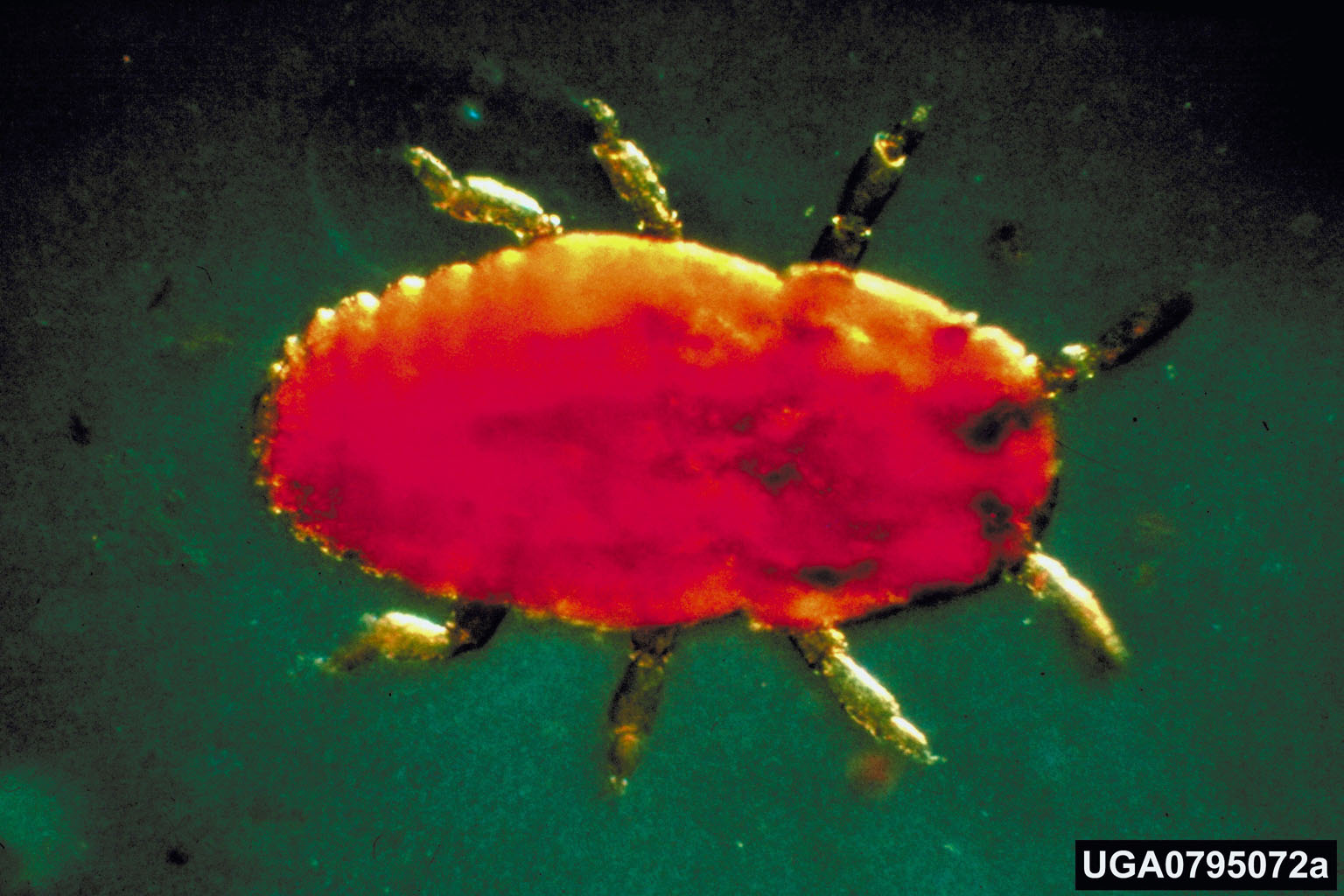
Michigan Invasive Species This website carries information on invasive species in Michigan, species profiles and reporting information and actions that can be taken to prevent their spread. It also has information on invasive species laws, their control and management and local groups that are working on invasive species.
11 invasive species to watch out for in Michigan This article by Ken Haddad provides information on 11 invasive species that the residents of Michigan must keep an eye out for and report, if spotted.
Michigan Invasive Species (Watch List) Provides access to downloadable and printable information about invasive species that are on the watch list in Michigan and which are known to be posing threat to the economy, human and environmental health in the state.
Species of Concern This page by MDNR has provides brief information clues on some invasive species that are posing significant threats to the forests in Michigan.
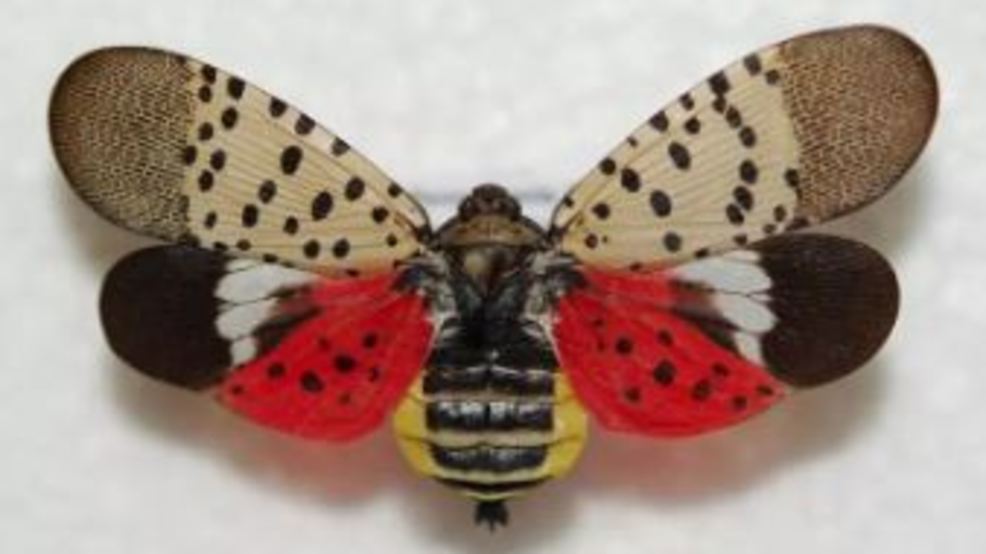
A Field Identification Guide to Invasive Plants in Michigan’s Natural Communities This booklet by Michigan State University is a compact field guide that provides useful insights on how to identify and recognize invasive plant species posing a threat in Michigan and US.
Invasive Species in Michigan This website by the Defender of Wildlife carries information on the names, origins and extent of invasive species in Michigan, and what you can do to stop them from spreading.
Spotted Lanternfly This page by USDA uses videos and text to provide information that will help with identifying Lanternfly. It also carries links to additional resources on the invasive insect.
Invasive Plants This website by the City of East Lansing provides information about common local invasive plants and how you can help to stop them from spreading.
Invasive Plants This site provides information about invasive plants and a link to information on the origin, impact, identification, and control of invasive plant species.
Invasive Species in the Great Lakes Provides information on invasive plant and animal species in the Great Lakes, as well as their prevention measures. It also features a page carrying a brochure listing of the invasive plants and aquatic species to watch out for.
Invasive Plants - The City of Ann Arbor This website provides a link to the invasive plant list in the City of Ann Arbor and how you can with their control.
Black Locusts This page by Vermont Invasives has rich information that can help with identifying Black Locust, the biology and management of the invasive plant.
Invasive Species - Wild Ones Red Cedar Chapter - Lansing, Michigan Provides information on some of the invasive plant species in Michigan, how to identify them and prevent them from spreading.
Lake Michigan Invasive Species Provides access to information that can enable you learn more about and understand invasive species. It also provides a link to publications on invasive species in Wisconsin and how you can order for them.
Invasive Species: Great Lakes Region Provides links to Asian carp education and outreach and to information on the bio-economic impacts of aquatic invasive species.
Invasive Plant Species of Michigan The booklet describes and provides information that can help with the identification of invasive species and how they can be controlled.
Invasive Plant Species Provides information on the invasive plants that are causing problems in Southeast Michigan and their control methods.
Invasive & Non-Native Species This page by National Park Service (NPS) provides picture-rich information on invasive plants and animals and invasive aquatic species. Provides detailed information on marine and great lakes invasive species.
Invasive and Non-Invasive Species Profiles and Reporting Information This webpage provides brief information and access to printable PDFs, containing information about watch list and non-watch list species in Michigan. It also provides guidance on how and where how you can report watch and non-watch list species, in case you detect them.
Invasive Species Resources Michigan Carries information, including publications on invasive species resources in Michigan.
Michigan's Invasive Species Newsletter This newsletter by the Michigan Department of Natural Resources provides a wide range of information that you need to know about invasive species in Michigan.
MSU Extension Invasive Species This website provides educational resources for identifying, assessing and controlling invasives in Michigan.
Invasive Plants in the Midwest Presents a photographic and text-rich information of the invasive plants to keep an eye on in the Midwest!
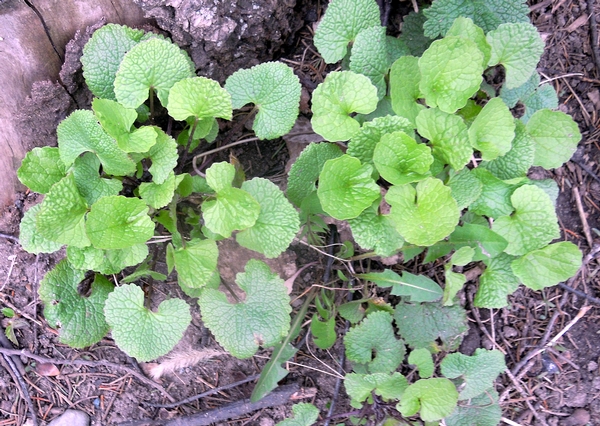
Invasive Species - NameThatPlant.net Provides information and links to pages hosting information on invasive plants that are posing threats to the natural areas of the Southeast.
Invasive and Exotic Species of North America This website by Nature Conservancy has an information-rich page on invasive weeds , PowerPoint presentations and galleries on invasive species.
Invasive Plant Atlas of the United States This site has a rich database of invasive species that are damaging managed lands and natural areas in the US. This includes species information, their images, distribution maps, and early detection reporting procedures.
Bugwood Blog Center for Invasive Species and Ecosystem Health Provides link to EDDMaps that could be used to obtain county and state-level information on the occurrence, record density and resistance occurrence of invasive species in the US.
Invasive Species Resources This website by the USDA hosts a comprehensive listing of resources on invasive species in Michigan and elsewhere in the United States.
US Forest Service-Invasive Species This page by the US Forest service provides information on invasive forest pests, pathogens and plants in the US.
The Oregonian. (Aug 9, 2018). Invasive plant species that cost Oregon millions. [Video] https://www.youtube.com/watch?v=D1WRyxgu1eo
Pest Alert Emerald Ash Borer NA-PR-02-04 Emerald ash borer (Agrilus planipennis) This 2-pager booklet provides information that can help identify and understand the biology, distribution, hosts and how to detect a tree infested by EAB, a wood-boring beetle from Asia that was identified in July 2002 as the cause of widespread ash tree (Fraxinus spp.) decline and mortality in southeastern Michigan and the adjacent parts of Ontario, Canada.
2018 MI DNR Forest Health Highlights Provides a description, vectors of spread, and impact of various forest pests that have been identified to be causing damages to Michigan forests and elsewhere in the country.
Michigan Invasive Species Program 2017 Annual Report This report by MDNR elucidates status and distribution of invasive species in Michigan.
Exotic Forest Pests Discusses exotic forest pests in Michigan and how to keep them out of the state.
Asian Long-horned Beetle This presentation that is hosted by the Michigan Invasive Species Information Network (MISIN) is on the characteristics, color, hosts, reproductive biology and patterns of damages caused to tress by Asian Longhorned Beetle.
Asian Longhorned Beetle: An Exotic Pest That We Don't Want in Michigan (E2693) This extension bulletin discusses the origin of Asian Longhorned Beetle (ALB) and how it got to North America. It provides a dense information of how to identify ALB, its life cycle, hosts, how it damages trees and how it can be prevented and controlled for.
Asian Longhorned Beetle This page by the University of Massachusetts Amherst Extension provides information on the history, hosts, regulation, appearance and life cycle of ALB. It also provides links to additional resources such as slides presentation on ALB.
Signs and Damage Pictures of ALB and CLB Provides useful information for identifying ALB and the signs that you need to look for all year-round to help determine if your trees have been attacked by ALB. Also provides information on Citrus Longhorned Beetle (CLB).
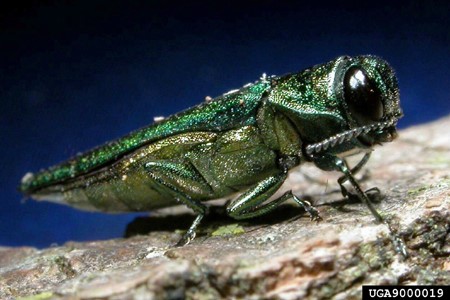
Signs and Symptoms of the Emerald Ash Borer This picture-rich two pager provides information on how to identify Emerald Ash Borer.
Emerald Ash Borer Information Network Provides all the information you need to know about EAB.
Emerald Ash Borer [Agrilus planipennis (Fairmaire)] This factsheet presents a more elaborate description of EAB, its lifecycle, symptoms and the damages it causes. It also provides information on EAB's lookalikes, hosts, control options and what can be done to curtail it from spreading.
Hemlock Woolly Adelgid A presentation by MISIN on all you need to know about Hemlock Wooly Adelgid, from their description, to their lifecycle, dispersal and movement, identification and their common lookalikes.
Hemlock Woolly Adelgid- Forest Alert Short leaflet on HWA- nice succinct summary.
13 On Your Side. (Apr 11, 2019). Invasive species threatening trees in Michigan. [Video]
https://www.youtube.com/watch?v=Vx1MsPaIPCU
Resources on Hemlock Woolly Adelgid This page by MSU Extension contains videos and bulletins, which provide commercial industry and homeowners with resources that explain hemlock woolly adelgid, the threat posed by the insect, and how to treat trees infested by with hemlock woolly adelgid.
Balsam Woolly Adelgid USDA Forest Service leaflet on balsam wooly adelgid, a tiny sucking invasive insect from Europe, which has caused tremendous damage and mortality to true firs in the western and eastern parts of US.
A New Utah Forest Insect Pest: Balsam Woolly Adelgid This fact sheet by Utah State University Extension discuses balsam woolly adelgid, its impacts on Utah forests, life cycle traits, identifying characteristics, control methods, and steps that Utah partners are taking to combat this pest.
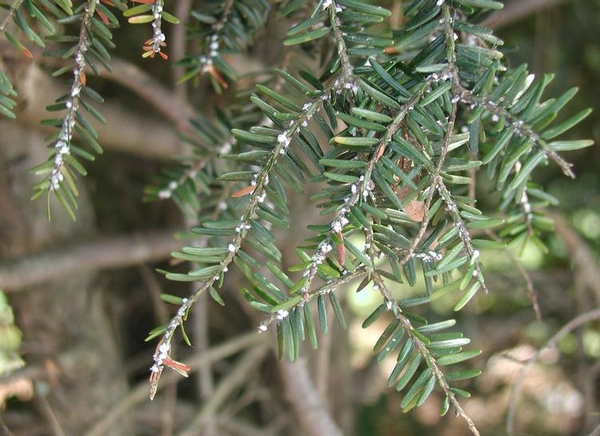
Garlic Mustard Provides useful information and access to resources on garlic mustard, an invasive plant from Europe, with potentially negative impacts on timber species and forest health.
Garlic Mustard This 14 minutes video provides useful information on garlic mustard, its identification and control.
Oak Wilt in Michigan’s Forest Resource This 8-pager discuses the pathology, symptoms, diagnosis as well as the treatment and management of Oak Wilt, a disease which poses considerable threat to extensive oak resource across much of the Michigan.
Invasive Species Compendium Provides a detailed coverage of invasive species threatening livelihoods and the environment worldwide.
Seven US Species Invading Other Countries List seven American species causing ecological mayhem abroad.
Midwest Invasive Species Reporting network This page has a searchable database of about 450 invasive species.
Is it beech bark disease? Provides some basic clues that can help guide against confusing this invasive with another.



 Print
Print Email
Email